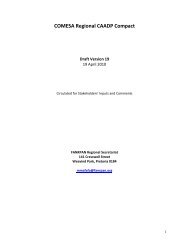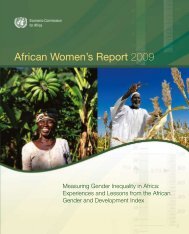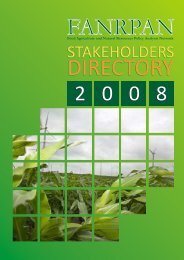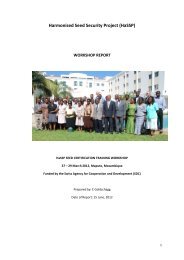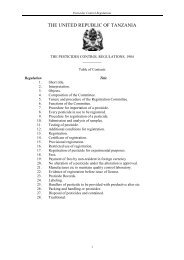Community-driven development decision tools for rural - IFAD
Community-driven development decision tools for rural - IFAD
Community-driven development decision tools for rural - IFAD
- No tags were found...
You also want an ePaper? Increase the reach of your titles
YUMPU automatically turns print PDFs into web optimized ePapers that Google loves.
communities and local governance in matters of <strong>rural</strong> <strong>development</strong>. Identifying ways toimprove communication and the capacity to communicate are necessary to improve theinstitutional environment of poor <strong>rural</strong> communities, which are often isolated and deprived ofaccess to key in<strong>for</strong>mation.At the level of the community, institutional analysis helps to• identify and understand the community’s own institutions (i.e. the “rules of the game”accepted by the members of the community) and how these can be used to devise selftargetinginstruments in favor of the poor;• acquire insights about factors influencing change and identify those changes that determinecommunity preferences and effective demand;• monitor the inclusion/exclusion of the poor and women in community public affairs andthe impact of inclusiveness on the role of the poor and women in managing communitypublic affairs;• understand issues of elite dominance and assess the risk of local elite capture of the benefitsof an intervention.This in<strong>for</strong>mation is essential to design project interventions that maximize the autonomous<strong>development</strong> of the CBOs and contribute to poverty reduction.Equally important is analysing relationships between the communities and the outside<strong>for</strong>ces that influence their opportunities and <strong>development</strong>. This process includes:• identifying who in the local system of governance has the power to make <strong>decision</strong>s aboutproviding specific services to communities;• assessing the mandates of the different levels of local government;• determining the scope <strong>for</strong> autonomous initiatives at the community level;Box 12Addressing the learning process: how caninstitutional analysis help?Because governance issues are important in<strong>for</strong>mulating CDD policy and projects, there is aneed <strong>for</strong> <strong>tools</strong> to help better understand theenvironment within which a CDD approach isapplied, to assess CDD’s chances of success,to identify the themes and the proper venue<strong>for</strong> policy dialogue and to designimplementation strategies.Methods of institutional analysis can greatlyimprove the learning process by helping to• understand the institutional and politicalsystem within and around the communities;• map the institutional architecture and theroles and functions of organizations;• assess strengths, weaknesses andcapacity-building needs;• identify enabling and disabling agencies andactors in the public sector and amongCSOs and commercial operators;• assess the constraints to empowering the<strong>rural</strong> poor;• map policy and project implementationarenas;• streamline project organization andmanagement arrangements, including thecrucial area of implementation procedures.Box 13Examples of enabling instruments• improved <strong>tools</strong> to understand power in andaround the <strong>rural</strong> communities;• monitoring and evaluation (M&E) systemsthat track governance results;• institutions that recognize the public utilityfunctions of CSOs working <strong>for</strong> pro-poor<strong>rural</strong> <strong>development</strong> and instruments <strong>for</strong>transferring public resources to them;• more flexible planning methods;• highly simplified procedures to approveCBO-initiated projects, release public funds<strong>for</strong> them, procure goods and services andexercise control over the use of funds;• improved communication.22



